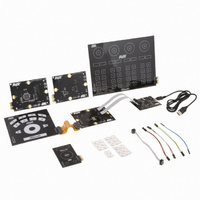ATQT600 Atmel, ATQT600 Datasheet - Page 48

ATQT600
Manufacturer Part Number
ATQT600
Description
KIT EVAL TOUCH FOR QT600
Manufacturer
Atmel
Series
QTouch™r
Specifications of ATQT600
Sensor Type
Touch Screen
Interface
USB
Embedded
Yes, Other
Utilized Ic / Part
ATtiny88, ATmega324PA, ATxmega128A1
Processor To Be Evaluated
ATtiny88, ATmega324, ATxmega128
Data Bus Width
8 bit, 16 bit
Interface Type
USB
Maximum Operating Temperature
+ 85 C
Minimum Operating Temperature
- 40 C
Operating Supply Voltage
1.6 V to 3.6 V
Silicon Manufacturer
Atmel
Kit Application Type
Sensor
Application Sub Type
Touch Sensor
Kit Contents
USB Bridge, MCU Cards, Touchpad Cards
Svhc
No SVHC (15-Dec-2010)
Mcu Supported Families
ATtiny88,
Rohs Compliant
Yes
Lead Free Status / RoHS Status
Lead free / RoHS Compliant
Voltage - Supply
-
Sensitivity
-
Sensing Range
-
Lead Free Status / Rohs Status
Lead free / RoHS Compliant
Available stocks
Company
Part Number
Manufacturer
Quantity
Price
Company:
Part Number:
ATQT600
Manufacturer:
Atmel
Quantity:
135
10620D–AT42–04/09
Self-capacitance One-dimensional Sensors
5.2.3
5.2.4
5.2.5
5-2
Hand Shadow Effect
Floating Conductive Items
Conductive Paints
When a sensor is particularly large in proportion to a hand, it is possible for a false touch to be detected
from the hand as it is held over the sensor, rather than from the user’s finger. This is known as the hand
shadow effect (see
Figure 5-1.
This effect presents a particular problem for large sliders or wheels that use the self-capacitance style of
electrode. These electrodes are generally scanned so that all the channels are measured at the same
time, which makes all the channels equally touch sensitive.
The considerations for the use of floating conductive items described in
Conductive Items” on page 3-6
The considerations for the use of conductive paints described in
page 3-7
Note that wheels and sliders, in particular, can be badly affected by conductive paints and finishes. The
reason for this is that the calculation of the touch position relies on the difference in signal between the
various channels, and the conductive paint has a tendency to make the channels cross-couple together.
The result is a considerable degradation of the resolution of the sensor.
If this is not possible, and the connecting traces have to be routed on the same layer as the electrodes
themselves, always escape the traces as quickly as possible out of the touch area; then regroup the
three traces for their path to the sensor chip. It can be useful in some cases to run a thin ground trace
alongside these escaping traces to desensitize them to touch. Note that some experimentation is
usually necessary.
apply.
Hand Shadow Effect
Touch here
Figure
5-1).
apply.
Sensor
Section 3.2.7 “Conductive Paints” on
Influence here despite
no panel contact
Touch Sensors Design Guide
Section 3.2.6 “Floating













